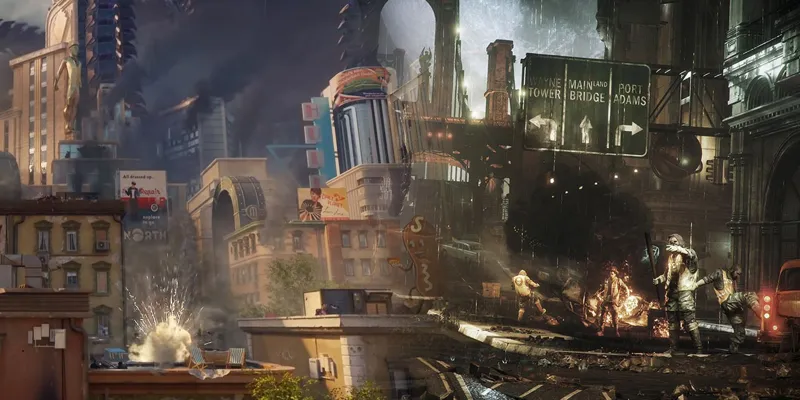The Batman: Arkham series is well-known for its innovative Freeflow Combat system, faithful adaptation of comic book source material, unique boss fights, and compelling characters, main story, and side missions. With the Batman: Arkham series, Rocksteady demonstrated its ability to bring a superhero world to life, and the developer has attempted to replicate this success with Suicide Squad: Kill the Justice League.
Set in the Arkhamverse, Suicide Squad: Kill the Justice League extends the world, characters, and story introduced in the Batman: Arkham series, while also forging its own path. The game's new Metropolis setting exemplifies this departure, presenting a stark contrast to the familiar backdrop of Gotham City.
Why Suicide Squad's Metropolis Feels Different from Arkham Knight's Gotham City
Suicide Squad's Co-Op Gameplay Doesn't Encourage Exploration in the Same Way as Arkham Knight
From a gameplay perspective, Suicide Squad: Kill the Justice League and Batman: Arkham Knight diverge significantly. While Batman: Arkham Knight centers around a solitary player experience, focusing on hand-to-hand combat and stealth, Suicide Squad: Kill the Justice League adopts a four-player, live-service co-op looter-shooter approach. Consequently, the two games approach their open worlds in disparate manners. As a solo endeavor, Batman: Arkham Knight encourages players to explore the game at their own pace, immersing themselves in both side content and main story missions as they desire. Conversely, Suicide Squad: Kill the Justice League directs players towards a more structured experience, with the co-op format discouraging extensive exploration of Metropolis, as the squad aims to swiftly progress through missions. This can result in Metropolis feeling relatively compact compared to the expansiveness of Gotham.
Suicide Squad's Metropolis Doesn't Stand Out Too Much
Another notable distinction between Suicide Squad: Kill the Justice League and Batman: Arkham Knight lies in the overall aesthetic of their open worlds and its impact on the memorability of the maps. In Batman: Arkham Knight, Gotham City comprised three distinct islands, each characterized by unique landmarks and architecture.
Conversely, while Suicide Squad's Metropolis is divided into multiple districts, the map tends to blend together due to the absence of distinctive architecture. Although certain locations such as LexCorp, the Daily Planet, and Centennial Park showcase captivating Art Deco designs, much of Metropolis lacks the same visual flair, appearing as a cluster of generic buildings.
This Might Only Be The Beginning For Suicide Squad's Metropolis
While Batman: Arkham Knight's depiction of Gotham City may currently hold greater prominence, the live-service approach of Suicide Squad: Kill the Justice League could potentially elevate the significance of its portrayal of Metropolis over time. The game's post-launch content will introduce new Elseworlds versions of Metropolis, with the first season incorporating a Jokerized Metropolis. If Rocksteady continues to introduce such unique iterations of Metropolis, the diverse offerings could contribute to the enduring appeal of the map.

